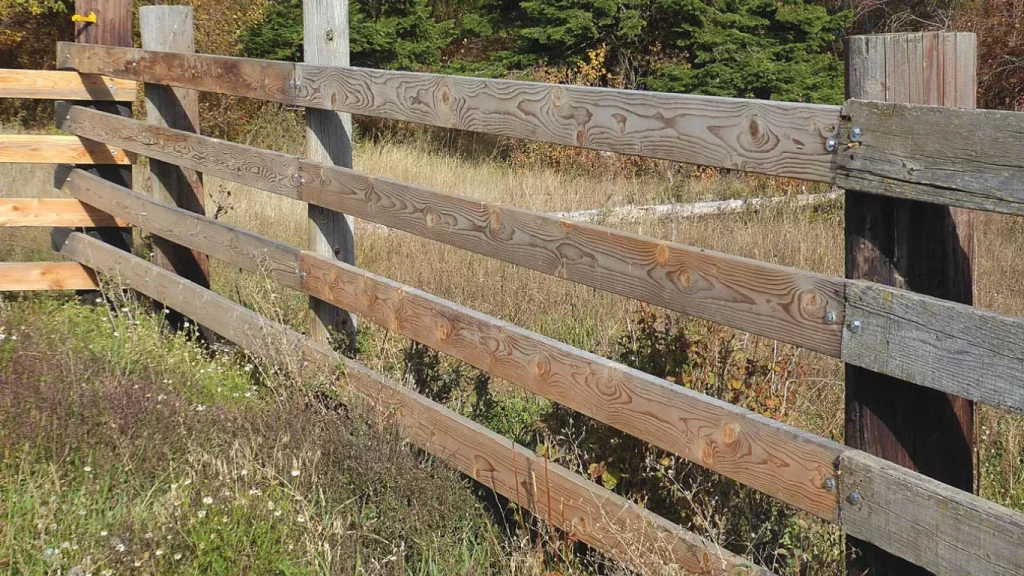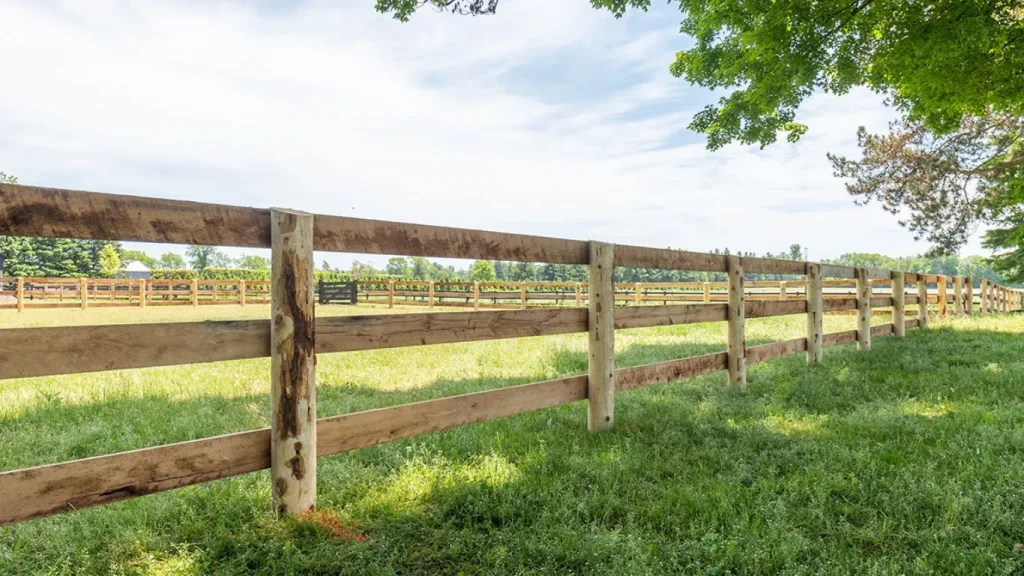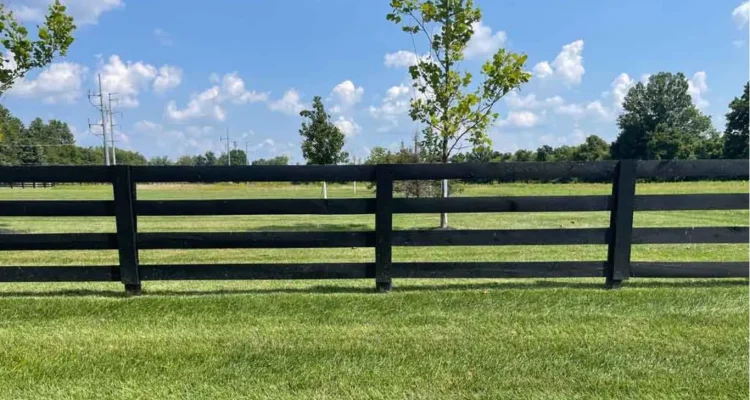When it comes to managing livestock, a well-built cattle fence is essential. Not only does it protect your investment, but it also ensures the safety of your animals. In this guide, we’ll walk you through everything you need to know about building a strong and durable cattle fence, from selecting the right materials to maintaining your fence over time.

Why Is a Good Cattle Fence Important?
Livestock Safety
A sturdy cattle fence keeps your livestock safely contained, preventing them from wandering onto roads or neighboring properties. It also helps protect your animals from potential dangers outside the fence, such as predators or hazardous environments.
Property Protection
A cattle fence also safeguards your property, keeping animals where they belong and minimizing the risk of damage to crops, equipment, or other assets. With the right type of fence, you can maintain clear boundaries and prevent disputes with neighbors.
Types of Cattle Fences
There are several types of cattle fences to choose from, each with its own advantages and disadvantages.
Barbed Wire Fences
Barbed wire is one of the most common choices for cattle fencing due to its affordability and effectiveness. The sharp barbs deter cattle from pushing against the fence, ensuring they stay within the designated area.
Electric Fences
Electric fences provide a shock when touched, which trains cattle to avoid the fence. This type of fencing is particularly useful for large areas and can be easily installed with minimal materials.
Wooden Post and Rail Fences
A more traditional option, wooden post and rail fences are strong and visually appealing. However, they require more maintenance and are typically more expensive than barbed wire or electric fences.
Pros and Cons of Each Type
- Barbed Wire Fences: Affordable but can cause injury to animals if not installed correctly.
- Electric Fences: Effective but requires a power source and regular maintenance.
- Wooden Post and Rail Fences: Durable but expensive and labor-intensive to install.
Materials You Need for Building a Cattle Fence
Fencing Materials
The materials you’ll need depend on the type of fence you choose, but generally include:
- Fence posts (wood or metal)
- Barbed wire, electric wire, or wooden rails
- Staples or fasteners
- Gates
Tools Required
- Post hole digger
- Hammer or staple gun
- Wire stretcher
- Measuring tape
- Level
Planning Your Cattle Fence
Understanding Property Boundaries
Before you start building, it’s essential to clearly define the boundaries of your property. This will help you avoid encroaching on neighboring land and ensure that your fence is built in the right place.
Choosing the Right Fence for Your Cattle
Different types of cattle require different types of fences. For instance, larger breeds may need stronger, taller fences, while smaller cattle or calves may be adequately contained with barbed wire.
Setting Fence Posts
Determining the Post Spacing
The spacing of your fence posts will depend on the terrain and the type of fence you’re building. In general, posts should be spaced 8 to 12 feet apart for barbed wire and 10 to 14 feet apart for electric fencing.
Digging Post Holes
Using a post hole digger, create holes that are deep enough to securely hold your fence posts. As a rule of thumb, at least one-third of the post should be buried in the ground.
Ensuring Proper Depth
Fence posts should be installed deep enough to prevent them from leaning or being pushed over by cattle. The deeper the post, the stronger the fence will be.
Installing Fence Wire
Types of Wire
Barbed wire and electric wire are the most common types of wire used for cattle fences. Each type has different installation requirements, so be sure to follow the manufacturer’s instructions.
Stretching the Wire
Wire should be pulled tight between posts to prevent sagging. A wire stretcher is essential for this step to ensure that the fence is taut and secure.
Attaching the Fence to Posts
Stapling and Securing the Wire
Staple the wire to wooden posts or use fasteners for metal posts. Ensure the wire is attached securely but not too tightly, as you’ll want to maintain some flexibility in the fence.
Importance of Tension
Maintaining proper tension in your fence wire is crucial for its effectiveness. If the wire is too loose, cattle may push through it; if it’s too tight, it could snap or cause injury.
Installing Gates
Gate Placement
Gates should be strategically placed in areas where you’ll need access to the pasture or cattle. Common locations include near barns, driveways, and corners of the fenced area.
Choosing the Right Gate Size
The size of the gate depends on the size of your equipment and livestock. A standard gate width is around 12 to 16 feet, but larger gates may be needed for farm machinery.
Maintaining Your Cattle Fence
Inspecting the Fence Regularly
Regular inspections are key to keeping your cattle fence in good condition. Walk the fence line at least once a month to check for broken wires, loose posts, or other issues.
Repairing Damaged Sections
If you notice any damage, such as sagging wire or leaning posts, make repairs immediately to prevent further problems. Keeping a well-maintained fence will save you time and money in the long run.
Safety Considerations
Preventing Injury to Livestock
A properly installed fence should minimize the risk of injury to your cattle. Avoid using materials that can easily break or cause harm, such as sharp edges or rusted wire.
Fence Safety for Humans
Make sure your fence is visible and clearly marked, especially if it’s electric. This will prevent accidental injuries to humans working around the fence.
Common Mistakes to Avoid
- Inadequate post depth: Posts that aren’t set deep enough can lean or fall over.
- Improper wire tension: Loose or overly tight wire can compromise fence effectiveness.
- Ignoring terrain: Fences should follow the natural contour of the land to ensure proper installation.
Cost of Building a Cattle Fence
Factors that Affect Cost
- Type of materials used
- Length of the fence
- Labor costs (if hiring help)
Budgeting for Repairs and Maintenance
Building a cattle fence is a significant investment, so it’s important to budget for repairs and ongoing maintenance.
Environmentally Friendly Fence Options
If you’re environmentally conscious, consider using sustainable materials like recycled wood or eco-friendly fencing options like solar-powered electric fences.
FAQs
- How deep should fence posts be for cattle fencing?
Fence posts should be buried at least one-third of their total length for stability. - What is the best type of fence for cattle?
Barbed wire and electric fences are the most commonly used and effective for cattle containment. - How often should I inspect my cattle fence?
It’s recommended to inspect your fence monthly for damage or wear. - Can I build a cattle fence on uneven terrain?
Yes, but it requires careful planning to follow the natural contours of the land. - How much does it cost to build a cattle fence?
The cost varies depending on materials, length, and labor, but expect to spend $1.50 to $5 per foot.

Conclusion
Building a cattle fence is an essential part of livestock management. With careful planning and the right materials, you can create a durable and effective barrier that keeps your cattle safe and secure. Regular maintenance and inspections will ensure that your fence lasts for years to come.


Congratulation!